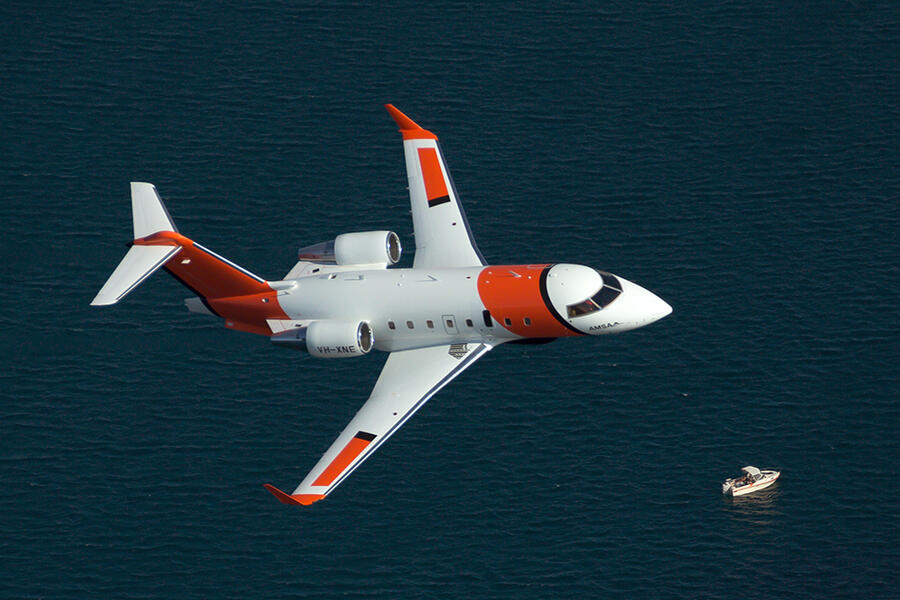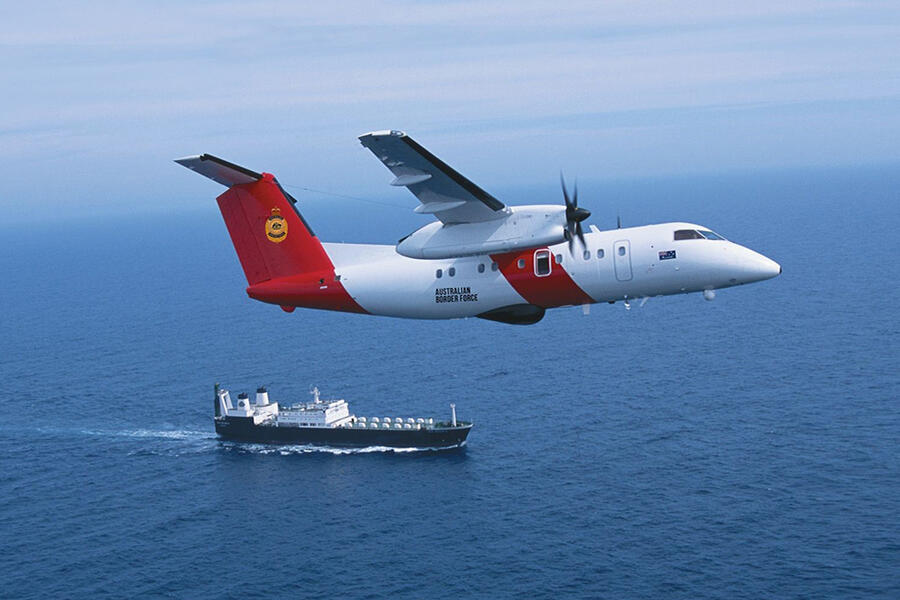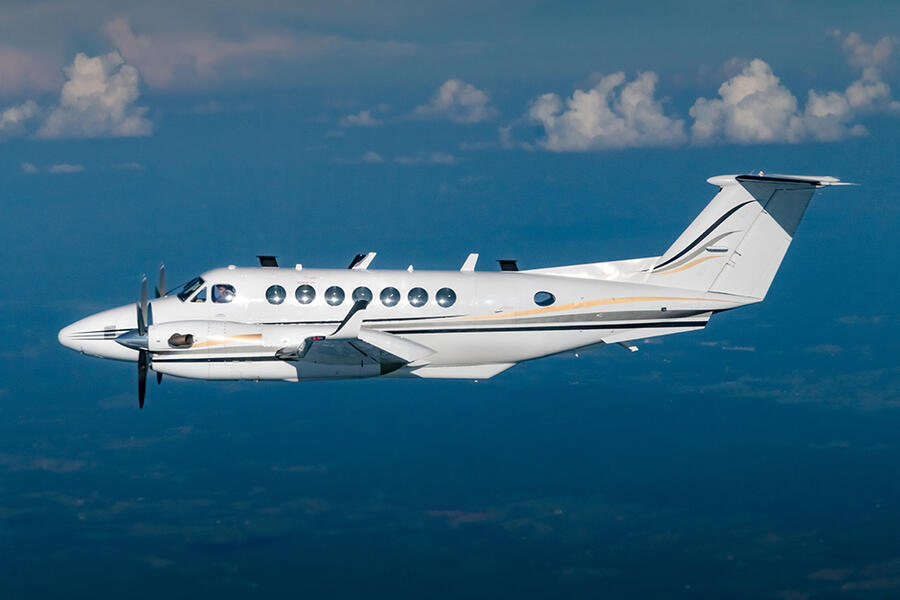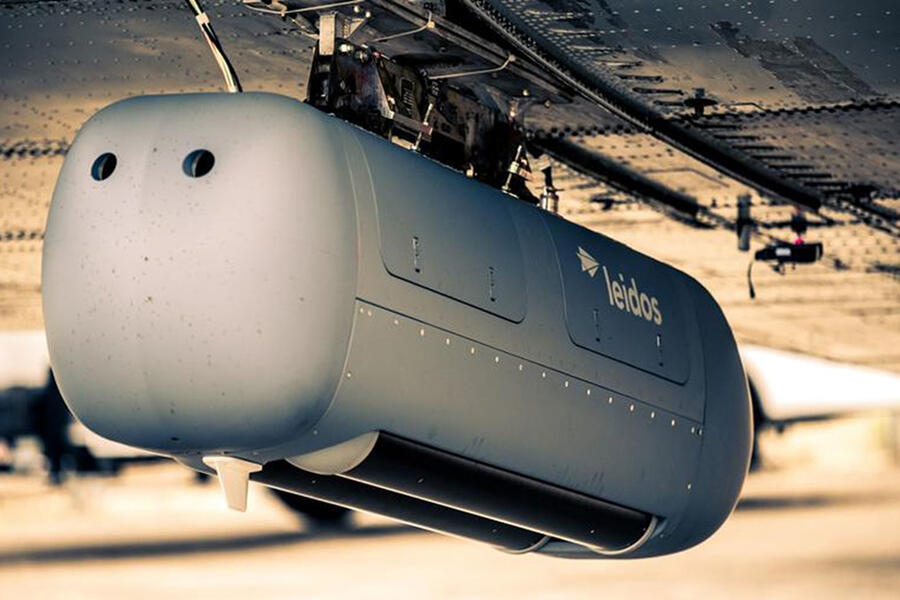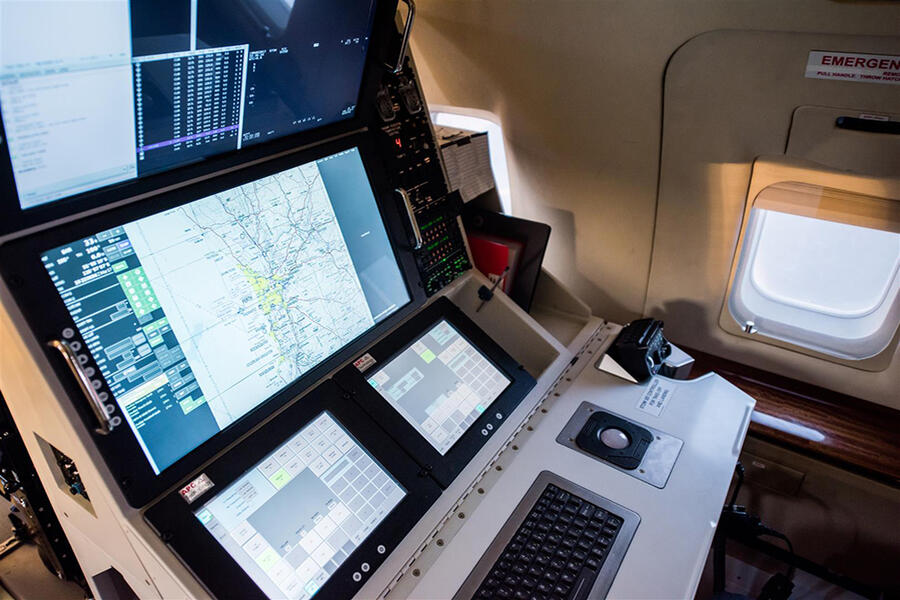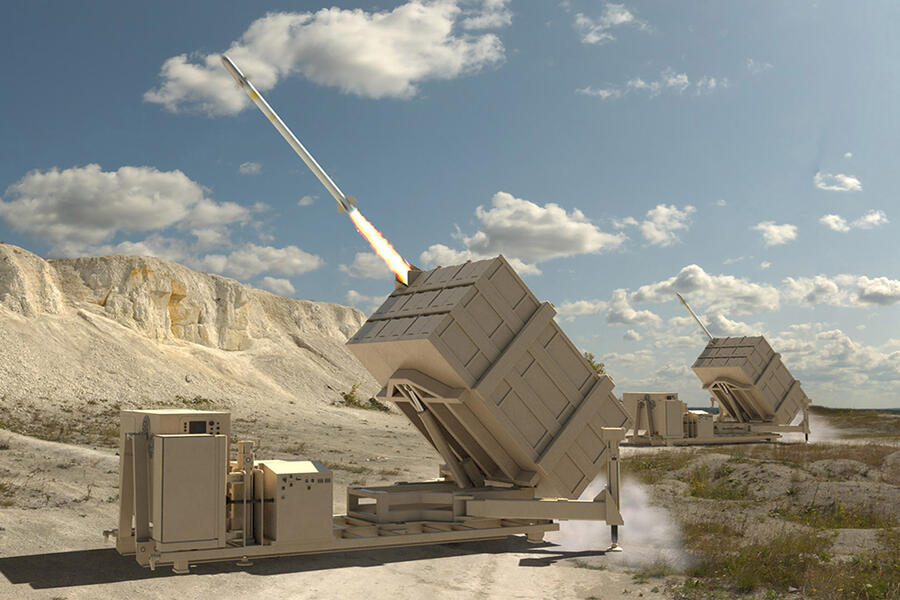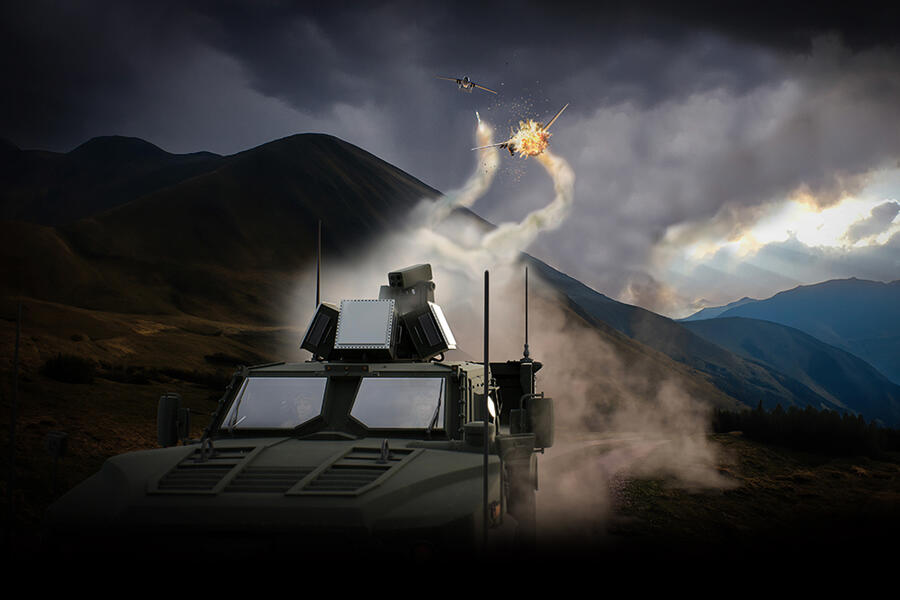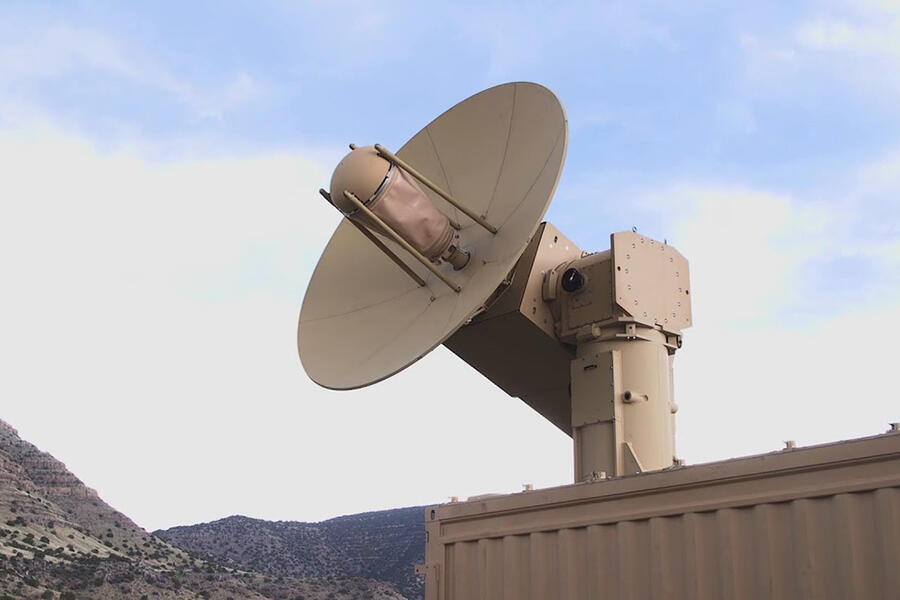
Avalon 2025
Visit Leidos at the Avalon Airshow 2025
Leidos Australia is proud to be solving some of the toughest challenges across intelligence, defence, aviation, border protection and the health sector. With a local team of around 2000 experts, backed by our global experience and network of partners, we deliver solutions that protect and advance the Australian way of life.
Visit us at Avalon in Hall 4 to explore our capabilities or contact us using the button below to discuss your needs.
Search-and-Rescue
We conduct airborne surveillance and Search-and-Rescue (SAR) operations spanning 53 million km2 and one tenth of the earth’s surface, bordering the SAR regions of 10 other countries. We provide fixed wing Search-and-Rescue response capability over land and sea on behalf of the Australian Maritime Safety Authority (AMSA).
Our fleet of four highly modified Bombardier Challenger 604 jets are used for Search-and-Rescue operations. The Challengers are based out of Perth, Melbourne and Cairns and contain some of the most sophisticated, state-of-the-art technology ever to be integrated into a civil SAR platform.
On board these aircraft, our mission aircrew operate a sovereign-developed mission management system integrating a range of sensors and communication systems to deliver operational outcomes in the national interest. When it comes to saving lives, every mission matters.
For more information about our Search-and-Rescue services click here
-
Transit speed—M0.74/445 knots true airspeed (KTAS) to M0.8/490 KTAS. This is equivalent to a commercial jet airliner speed.
Aircraft endurance—8 hours in normal standby configuration.
Flight range—3086 nautical miles (5715 kilometres) means the Challenger is well equipped at any of its base stations to respond to distress calls, as detailed in the map below.
Visual detection and ranging (ViDAR)—Sentient ViDAR maritime anomaly detection software with fixed staring three-camera array means that the Challenger has an improved capacity to conduct visual searches for small targets in the water, complementing the visual searching of the crew.
Observation—The Challenger has large observer windows forward of the wings which assist in visual search operations.
Delivery—An air operable door enables the Challenger to deliver life-sustaining stores and communications equipment to those in distress.
For more information about our Search-and-Rescue services click here
Surveillance
We provide fixed wing border surveillance services under contract with the Australian Border Force. We patrol Australia’s 8.2 million km2 Exclusive Economic Zone, which is the world’s largest outsourced civil maritime surveillance operation. This turnkey operation deploys a fleet of highly-modified surveillance aircraft flying around 15,000 hours and 2,500 missions per year, providing all weather, day and night coverage. These aircraft are fitted with new generation surveillance sensors and fully integrated advanced satellite systems to allow real time communication with the Australian Border Force command centre in Canberra. The modification and integration of the fleet was undertaken in-house by Leidos Australia.
For more information about our airborne surveillance activity, click here
-
Superior low-level flight stability – Dash 8s are known for their exceptional stability in low-level flight. Their high-wing configuration and robust airframe provide a steady platform, reducing turbulence impact and allowing for sustained low-altitude operations over open water. This is crucial for accurate surveillance, as sensor and camera systems require minimal movement for optimal image capture and data collection.
Adaptability for surveillance equipment - Dash 8s can be easily modified to integrate state-of-the-art surveillance equipment, including radar systems and electro-optical/infrared (EO/IR) cameras. Their high clearance supports compatibility with remote runways while their spacious fuselage allows for mission-specific modifications, making them versatile assets for conducting aerial reconnaissance.
Short take-off and landing (STOL) capabilities - Surveillance missions often require flexibility in deployment. Dash 8s boast excellent short take-off and landing (STOL) capabilities, allowing them to operate from smaller airfields close to coastal regions. This means reduced transit times to mission areas and the ability to support remote operations where infrastructure is limited.
Proven performance in harsh environments - These aircraft are built to withstand challenging environments, including coastal weather conditions, salt air exposure, and turbulence common in maritime operations. Their rugged design ensures reliability in extreme temperatures and adverse weather, which is crucial for missions that demand operational consistency in unpredictable conditions.
For more information about our airborne surveillance activity, click here
BuckEye: High Resolution 3D Geospatial Information Operation and Technology Integration (HR3DGI O&TI)
We provide geospatial intelligence around the globe with BuckEye, an integrated sensor solution for manned and/or unmanned aircraft that can also be easily mounted to ground vehicles. Since 2004, BuckEye has collected 3+ million km2 of high-resolution data across 38 countries, providing customers like the U.S. Army Geospatial Centre with an accurate and precision understanding of terrain for detailed mission analysis and preparation of the environment at a tactical and urban level.
BuckEye provides high resolution 3D imagery with accuracy and precision that improves situational awareness in any environment. This includes:
- Light detection and ranging (LIDAR) elevation data from 50-centimetre to 1-metre resolution
- Color electro-optical (EO) orthomosaic imagery from 2-centimetre to 10-centimetre resolution
-
- Line of sight for intervisibility mapping
- Helicopter landing zone analysis
- Route analysis
- Improved common operating picture
- Environmental mapping
- De-mining
- Improved access to water
- National/international high-profile events
- Roads and infrastructure analysis
- Force protection
- Border security
- Disaster preparedness
- Littoral mapping
Find out more about our geospatial intelligence in the below video:
Leidos Special Mission Aircraft (LSMA)
Scalable solution for high altitude intelligence, surveillance and reconnaissance needs
We deliver a holistic procurement or Contractor Owned – Contractor Operated (COCO) service that includes aircraft, flight operations, maintenance operations, and logistics support. Our high-accuracy airborne Intelligence, Surveillance, and Reconnaissance (ISR) capability is the LSMA. It’s built on a common platform using a commercially derived aircraft (Bombardier CL-650 & 6500) that enables rapid integration of military packages that include secure communications, navigation, and survivability.
For more information on Leidos Special Mission Aircraft click here
-
LSMA features
Ability to fly up to 6,600 NM or loiter for 12+ hours with a maximum altitude of 51,000 ft while carrying a robust mission equipment package of up to 6,500 lbs and up to 10 flight and mission crew
- Secure military communications, secure GPS, TACAN, common lightweight interior, and mission avionics rack
- Can be equipped with ASE, IMINT, ELINT, SIGNIT, and radar sensors
- Capable of operating in an Anti Access/Area Denial (A2/AD) environment
- Global Air Traffic Management (GATM) compliant
- Tactical Communications (Line of Sight, Beyond Line of Sight, Voice and Data)
- Solid performance and reliability history (99.9% dispatch rate)
- Can be rapidly re-configured from high-altitude ISR to utility/cargo or MEDEVAC configuration
- Only slightly larger than the King Air 350 platform and can easily fit into most KA capable hangars, minimising cost of new hangars
- Leidos owns the license rights and can quickly and efficiently modify the aircraft as desired/required
LSMA system design
- COMINT (Communications Intelligence)
- ELINT (Electronic Intelligence)
- Radar
- Hyperspectral
- EO/IR (Electro-Optical/Infrared)
- ASE (Aircraft Survivability Equipment)
- BLOS (Beyond Line of Sight) dissemination
- Tactical communications
For more information on Leidos Special Mission Aircraft click here
Strike Systems and Hypersonics
Developing and building next-generation strike systems and technology
Small Glide Munition (SGM)
Our Small Glide Munition (SGM) is an enhanced capability, stand-off precision guided munition that can be carried on AC-130 gunships or unmanned aircraft systems. It features a modular design, allowing multiple common variants and considerable design flexibility.
By mounting the seeker nose section, tail kit, and wing assembly directly to the warhead case, the SGM allows different seekers, warheads, and other subsystems to be readily incorporated. Our hypersonic offerings include glide body prototyping, developmental testing, booster design and development, hardware-in-the-loop testing, small satellite development and associated EO/IR sensor development, and radar systems analysis and development. The semi-active, laser-guided munition uses lattice control fins for aerodynamic stability and control.
For more information on our Strike Systems and Hypersonics capabilities click here
-
Features
- Stand-Off Precision Guided Munition (SOPGM) with GPS/semi-active laser guidance
- Carried on AC-130s, with ongoing integration on Remotely Piloted Aircraft
- 42 inches long & 59-lbs, and compatible with CLT & Battle Management System (BMS)
- 36-lb blast-frag warhead, capable of fusing on impact or via variable height of burst sensor
- Modular design allows variants and design flexibility. Components mount directly to the warhead case, so different seekers, warheads, and other subsystems readily incorporated.
Options
- Two-way datalink. An optional two-way datalink enhances the capabilities of the SGM, enabling the weapon to be a part of a network consisting of other airborne platforms and tactical air controllers.
- Multiple platforms. SGM has been tested on UAS, including the ARSOAC MQ-1C ER Gray Eagle medium-altitude, long-endurance UAS.
- Smaller variants. A smaller, lighter variant is being developed to increase the load out on various UAS'.
For more information on our Strike Systems and Hypersonics capabilities click here
Small Cruise Missile (SCM)
Leidos’ Black Arrow Small Cruise Missile (SCM) is a low cost, mission adaptable, modular delivery platform designed to facilitate future spiral upgrades for kinetic and non-kinetic missions. It is a small air-to-ground cruise missile that can fly about 400 nautical miles and hit targets even when the GPS is down. Leidos is leveraging model-based systems engineering, additive manufacturing, and AI optimisation practices to support the timely and cost-effective development, which aims to provide adaptability and utility for the warfighter. The open architecture SCM solution is intended to integrate the best subsystem solutions, regardless of the source.
More information available on request - click here.
-
Leverages success of the GBU-69/B Small Glide Munition and the DARPA X-61A Gremlins Unmanned Air Vehicle
Adaptable electrical and mechanical designs enable rapid system upgrades for evolving warfighter needs
Modular airframe components enable partner participation via distributed manufacturing
Software meets Weapon Open System Architecture (WOSA) standards to facilitate future enhancements
More information available on request - click here
Hypersonics
With a history of providing rapid, novel and creative solutions, Leidos is a trusted system integrator and partner in weapons systems research and development. We are building weapons systems that can travel at Mach 5 or higher to counter and gain a lead on our adversarial technological advances in this field.
Leidos is supporting the United States Government across multiple Hypersonics programs, such as Common-Hypersonic Glide Body (C-HGB) and Multi-Service Advanced Capability Hypersonic Test Bed.
The CHGB uses a booster rocket motor to accelerate to well above hypersonic speeds and then jettisons the expended rocket booster. The CHGB is planned to be maneuverable, potentially making it more difficult to detect and intercept.
For more information, click here, visit our Hypersonics web page or view our PDF Brochure.
-
- Glide vehicle prototyping
- Complex and classified manufacturing
- Complex engineering skills
- Developmental testing
- Booster design and development
- Classified modelling and simulation
- Hardware-in-the-loop testing
- Small satellite development
- EO/IR sensor development
- Radar systems analysis and development
Leidos AgilePod® Family of Systems
KingAir350 (Pod Solution)
Modular military pods can attach to wide variety of aircraft, deploy drones, navigate without GPS signals and more.
These podded solutions are about creating better platforms and expanding the mission capabilities of aircraft. The pods can be reconfigured with a variety of new capabilities without going back to the drawing board, spending millions to modernise the aircraft’s structure, or building a new plane altogether.
Leidos can fit other payloads into the pods based on the needs of a particular mission, including radar alert systems and cognitive electronic warfare capabilities.
For more information on Leidos' AgilePod® click here
-
- Modular military pods can attach to wide variety of aircraft, deploy drones, navigate without GPS signals.
- Modular and scalable integration of sensors to meet mission requirements.
- Demonstrated Standard Electrical and Mechanical interfaces complement the Open Architecture (OMS) environment.
- Reduced development, vendor lock, sustainment and life cycle costs; affordable obsolescence support.
- Adaptable pods can expand mission capabilities without expensive new or reconfigured platforms.
For more information on Leidos' AgilePod® click here
Mission Management Systems
Our Mission Management System (MMS) is the computer used to capture, integrate and disseminate all data (video, audio, imagery) generated by the technologies fitted into our aircraft (the sensors, radar, Electro-Optics and broadband satellite communications), in real-time. It enables the ground operations team together with the aircrew to identify the next steps required in each mission.
We have collaborated with Australian defence software and systems engineering company Acacia Systems on the development of a customised MMS for our government clients.
This is the first surveillance Mission Management System of this kind to be designed and developed in Australia, and is the most advanced civilian airborne surveillance system in the southern hemisphere.
This MMS has the potential to be utilised in both civil and military domains both in Australia and overseas. It can be bolted into other airborne platforms that have a need to collect, interpret and disseminate data generated from onboard technologies.
Leidos Australia has a Systems Integration Lab, where mission systems technicians collaborate with local SMEs, prototype and test aircraft mission management system hardware, software, equipment and wiring integration for mission support and ISR operations.
-
- Leidos Australia's MMS is an intuitive, web-based, device-agnostic system that easily integrates with other systems.
- It can be hosted in the cloud, on Leidos infrastructure, or on customer infrastructure (on-premise) according to customer requirements.
- Users access system modules using a suite of mobile applications, available 24x7x365.
Air Defence Systems
Enduring Shield
Enduring Shield is a mobile ground-based weapon system designed to acquire, track, engage, and defeat unmanned aircraft systems, cruise missiles, rockets, artillery, and mortars. The transportable system is capable of firing a range of missiles. It provides a 360 degree air defence envelope with the ability to engage multiple targets simultaneously. The proven and existing technologies within Enduring Shield deliver a cyber-resilient solution on a rapid schedule. The mobile solution fills gaps between tactical shortrange air defence and strategic air and missile defence.
For more information about Enduring Shield, click here. There's also some great information in this press release.
-
- Open system architecture allowing interface to different command & control, and interceptor options.
- Vehicle agnostic: platform mounted for easy transportability.
- Relatively low-cost solution for cruise missile threats.
- 4 launchers per platoon can provide 360-degree coverage up to 16 sq km with current interceptor and sensor.
- Load/reload accomplished by replacing magazines; operators do not handle live rounds.
For more information about Enduring Shield, click here
AirShield™
Leidos AirShield™ is engineered to deliver robust air defence while on the move, providing capabilities among the most advanced in the industry to support counter-unmanned aerial system (C-UAS) missions. The system employs advanced threat assessment along with multiple mechanisms to provide a comprehensive air defense solution against unmanned aerial vehicles (UAVs), particularly in dynamic and fluid operational environments.
-
- AirShield™ is a multi-layered system that can operate autonomously in a single location or on the move to provide protection from UAS threats.
- Enables detection, tracking, classification, identification, prioritisation, assessment, and neutralisation of threats, providing a kill-chain solution that can seamlessly integrate into existing air defences.
- The system employs AI for weapon-to-threat pairing, previously managed by a rule-based algorithm.
For more information about AirShield™, click here.
For more information on Leidos AirShield™ view the below video or click here
THOR
Tactical High Power Microwave Operational Responder (THOR)
The THOR program develops a counter-drone technology for airbase defence. Leidos led the design, development, and testing of the High Power Microwave (HPM) source for this system, and we support the source operation and maintenance throughout the THOR system test and evaluation. THOR provides non-kinetic defeat of multiple targets in a compact system that is easily transportable to theater by ground or by air in a C-130. Upon placement, THOR is operational in a matter of hours and requires minimal training. System advantages include low operating costs, a deep magazine, and connectivity with existing base C2 systems to work in conjunction with other defensive measures.
For more information about THOR, click here.
-
- Low operating costs.
- A deep magazine.
- Connectivity with existing base C2 systems to work in conjunction with other defensive measures.
For more information about THOR, click here.
Mjolnir
Mjolnir is a next generation counter electronics weapon system, to defend against adversarial drone activity.
Mjolnir is a fully integrated, standalone system based on mature High Power Microwave (HPM) technology, providing non-kinetic defeat of single and multiple targets. As a trailer-based HPM system, it can be transported by ground or C-130, providing rapid deployment and positioning to quickly and effectively protect critical assets.
Visit us at Avalon in Hall 4 to explore our capabilities or contact us using the button below to discuss your needs.








